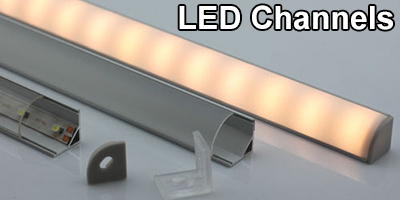Aloha,
The Ti-PD is constructed a little different than the PDIII, but the procedure is not much different. The Ti-PD has an aluminum disk that the LED is set into, as opposed to being set into the head itself.
You will need to disassemble the head, and place the parts in a clean zip lock bag. I always draw a picture of the parts in the order that I remove them to ensure that all goes back together well. Draw this sketch right on the bag for quick reference.
Once the bezel, window, o-ring, and reflector are removed, remove the screw that holds the driver board to the heatsink. Watch for the tiny lock washer! Now that you have some slack, desolder the leads to the LED. If the wires are an odd color, you may want to mark the positive and negative on the driver board and/or the wires themselves. You may need to dislodge the heatsink with the LED from the head. After it is loose, you will need to remove the LED. Heat helps with this step. Remove all of the old epoxy from the seat area, and clean it well with alcohol.
For installing the Seoul LED in the heatsink, you will need to shim the LED with a copper disk that is 0.030" thick. Use Arctic Alumina thermal epoxy to adhere it in place. Check for continuity between the copper shim and the heatsink. The heatsink is anodized, but you may have scratched the surface while removing the old epoxy, and removed some anodization in places where the copper shim will sit.
Trim the legs of the LED to shorten them. I leave a very small length of the portion that is pointing downward. Next, you will need to epoxy the LED in place. Careful attention to centering the LED will pay off once the reflector is in place. You can try a trial fit with the reflector in the head, but the AA cures so quickly, that you only get one chance. You will likely have better results doing it by eye. Check for any continuity between the anode and ground.
Once the AA has fully cured, fit the heatsink into the head, and solder the leads onto the new LED, observing the polarity of the LED. Verify that you solder job is secure. The GD driver boards will not tolerate an open circuit. Install the driver board into the head and heatsink using the screw and washer. Again, check for any continuity between the anode and ground. Verify that the leads are still in place and secure. Test the mod in the body to verify all is well. It should be very bright!
Don't celebrate yet... You now need to modify the reflector. You could just buy a new McGizmo Seoul reflector and be done with it, but this is DIY. Use a pair of calipers to measure the height of the stock reflector. Write that measurement down somewhere, and figure out what the height would be with the 0.030" removed. Use a fine file to remove the material from the back of the reflector. Rotate the reflector with each pass, or so. Check your progress, and make sure that you do not remove too much material. Once you get it close to the final height, use some 400 grit wet/dry sandpaper to give the reflector a smooth finish. I use a bamboo chopstick to run around the inside lip of the reflector and remove any metal burrs. Give it one final pass over the sandpaper, and then wash the filings out with scalding hot water. Blow out the reflector with compressed air, and be certain that you do not touch the reflector, or let any water drops dry inside it.
Use your diagram on the bag to reassemble the parts in the correct order. Be very careful when seating the o-ring around the rim of the reflector. One slip will damage the reflector. Don't touch the surface of the glass window, either. Screw the bezel into place, and then examine your handiwork.
With the LED swap, the driver board is just as efficient as with the Luxeon. The PD's use the GDx2 driver boards, and they are about as efficient as you can get. If you are feeling adventurous, raise the drive current while you are inside the light.
Most of all, have fun and enjoy yourself. :thumbsup:

